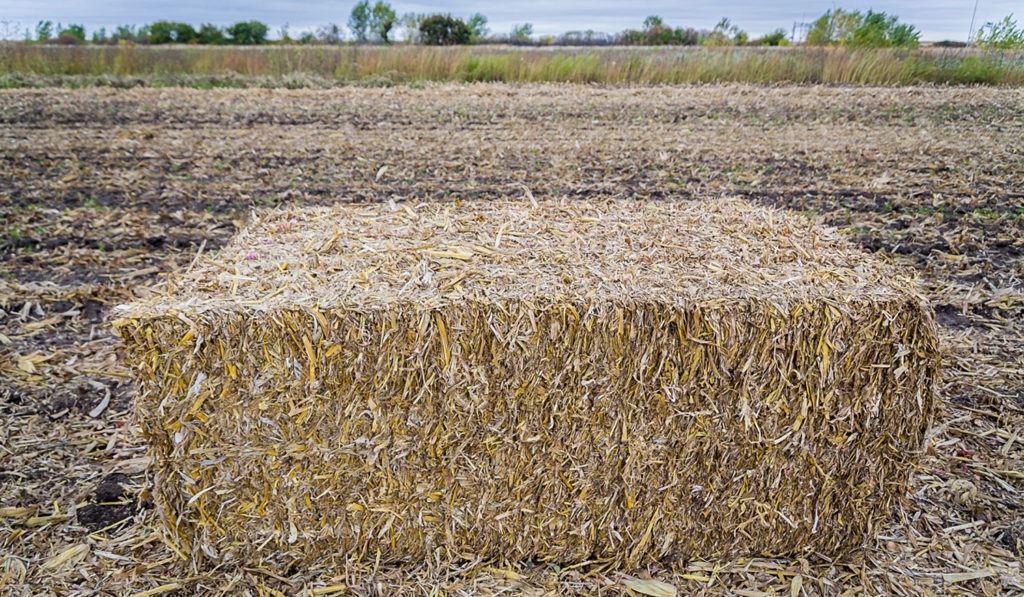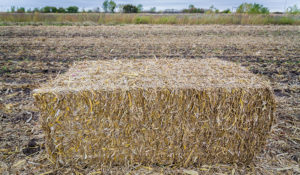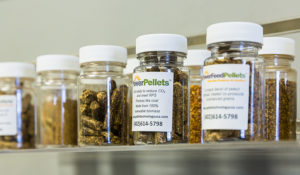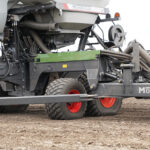So… What Do We Do with ALL that Material?
We’ve talked about collecting 90,000 tons of corn stover and working with Pellet Technology USA. And we’ve also discussed the impact that it can have on a local market’s economy. But what do you do once you’ve collected that 90,000...

So… What Do We Do with ALL that Material?
We’ve talked about collecting 90,000 tons of corn stover and working with Pellet Technology USA. And we’ve also discussed the impact that it can have on a local market’s economy. But what do you do once you’ve collected that 90,000...
We’ve talked about collecting 90,000 tons of corn stover and working with Pellet Technology USA. And we’ve also discussed the impact that it can have on a local market’s economy.
But what do you do once you’ve collected that 90,000 tons of stover? Actually, a lot of things.
Our Biomass Solutions team started working with Pellet Technology two years ago. Our aim was to help them, and local farmers, collect and bale the ag residue from their fields.
We are continually working with Pellet Tech to streamline the process and hope to double our take of corn stover with them to over 200,000 tons in the near future.
But why is this stover collection story-worthy?
There are myriad reasons. First and foremost is the improved future yield from the fields. Another, is Pellet Technology USA’s revolutionary creation of pelletized feed for cattle and other animals. But it doesn’t end there. Stover can be converted into energy, medical devices, bio-degradable plastics and many more innovations still to come.
The most important part, however, is that it can be healthy for the field in general – improving soil quality and yields for future harvests. Too much stover can be just as detrimental to soil health and future growth as too little.
Corn fields, especially where we’ve been operating in Nebraska, are in corn-on-corn production. That means the fields are used to grow corn every year. So, each year when the corn is harvested there are tons of ag residue left on the fields. In the past, that residue was between two to three tons per acre. Now with the corn grown closer together and more hearty, the ag residue amount has risen to between seven and eight tons per acre.
That’s quite a big jump in residue.
With that additional residue, the land becomes covered much more densely. In turn, it’s more residue that needs to decompose over the winter. Or, as has been done in the past, it’s tilled back into the ground (which takes labor, equipment, time and fuel). But we’re finding that even tilling can cause more of a problem, as the increased residue is unable to decompose fast enough for the next harvest. In turn that means that more equipment, time and fuel is needed to add nitrogen to the fields. Early application of nitrogen is important, because microbes that break down the stover need nitrogen for that process.
What we’ve learned by gathering the residue – into high-density square bales, of course – is that it has several important benefits for fields and future crop yields.
First, the residue doesn’t need to be tilled back into the ground – saving time and fuel. The field also doesn’t need an early application of nitrogen – again saving time, fuel and the cost of nitrogen. Third, with the amount of residue reduced, the fields are warming up faster in the spring, allowing for the corn to get off to a quick start.
So, it’s a win for Pellet Technology, which has a vested interest in the residue in these fields. But it’s also a win for the farmer. And, there is reduced environmental impact, because there is less fertilizing and a decrease in fossil fuels being burned operating the equipment. In the end, less equipment usage means less wear-and-tear on the equipment.
But, back to what happens to the collected and baled stover.
For Pellet Technology, the tons of stover are converted into pellets by a proprietary process. The pellets are then used as feed or as pellets for energy storage and conversion.
On the feed side, Pellet Technology has created pellets that feed cattle. The use of pellets as feed has been tested during the lives of cattle through a partnership with the University of Nebraska.
So, what’s the upside? Why does this matter?
For example, during the extended drought on the West Coast, ranchers and farmers were having a difficult time procuring necessary feed. How can a rancher feed his herd when the cattle can’t graze, because the grass hasn’t been able to grow due to the lack of water? Now they can use Pellet Technology’s patented PowerFeedPellets™ to feed their herd and provide the nutritional diet necessary to keep them healthy.

Another use of corn stover is in energy and ethanol. Today, 97 percent of the country’s motor fuel mix contains about 10 percent ethanol.1 Ethanol provides a clean octane boost to fuels. This benefits refiners, who then no longer need to add toxic chemicals like MTBE to gasoline. And more important, according to the U.S. Department of Energy’s Argonne National Laboratory, on average, fuel with ethanol reduces CO2 emissions by 34 percent.2
And it’s renewable.
One of the early adopters of high-ethanol fuels is NASCAR. Such fuels burn cleaner, provide more power and higher octane levels, and they emit fewer greenhouse gases. I’ll save the rest of that story for another time.
The energy from the stover also can be used to generate electricity or heat.
According to the Oak Ridge National Laboratory, energy crops and crop residues could provide 14 percent of U.S. electricity use – which could essentially light up the entire West Coast! Or, it could provide 13 percent of the national’s motor fuel.
So, there are a lot of uses for this “trash.” It’s potentially a whole new way to feed animals and produce energy. But, what’s even more exciting is that no one really knows what innovations are still on the horizon from collecting and processing corn stover.
Only time will tell.
https://ethanoleffect.com/?gclid=CNKzspDa_s8CFRE7gQodvoUI2Q
http://iopscience.iop.org/article/10.1088/1748-9326/7/4/045905/pdf



